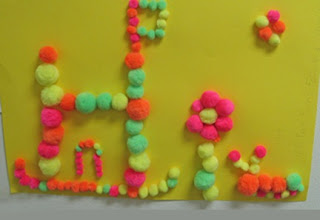WordQ
Today, for one of our literacy centers we had our students
working with an amazing program called WordQ. WordQ is a digital writing tool
that integrates word prediction, spoken feedback and speech recognition in
order to help students with the writing process. It uses word prediction to assist
and support writers by preventing, identifying and fixing their own mistakes.
As a student types, WordQ predicts the word that may come next, the student sees different words in a list and can select the word they feel is appropriate. Following their
selection, the program will read back the sentence in order for the student to
determine choice accuracy. Here is a quick breakdown of WordQ capabilities and
what we use it for in our classroom:
- · Predicts words as you type
- · Reads predicted words in order to improve choice accuracy
- · Predicts the next grammatically correct word automatically
- · Re-reads sentences as they are typed for word flow and meaning
- · Re-reads and highlights completed work for editing and proofreading
- · Reads digital text on your computer
A screen shot of beginner word selection list:
WordQ has the ability to adapt to different levels of need. Vocabulary
lists can be limited for beginners and advanced for those who are more
proficient at writing. In our Grade 3 class, many students are English language
learners and still learning to become great writers. For this grade, we use the
beginner setting which has a limited vocabulary list with choices they will
recognize and be able to select. Once they have selected the word, WordQ reads
the sentence back to them in order to confirm their selection.
This is only an exploration of the most basic WordQ program. There are
many other additions that have more advanced capabilities. For the purpose of
our classroom however, we use the basic program with Microsoft Word. We have
noticed a tremendous difference not only in our student’s confidence with
writing but also their enjoyment of it. This program helps them edit their work
as well as learn more about tenses, abbreviations and grammar. There are many other resources available on WordQ's website as well as a number of tutorial videos. This program is very user friendly; anyone can learn it quickly and efficiently. Definitely a classroom resource every teacher and student should have access to.
http://www.goqsoftware.com/resources/videos/
http://www.goqsoftware.com/en/

























